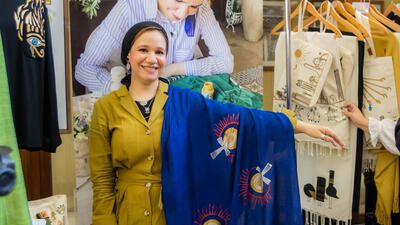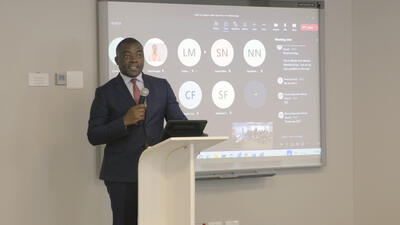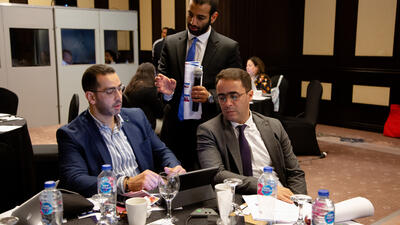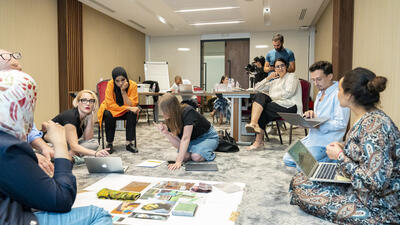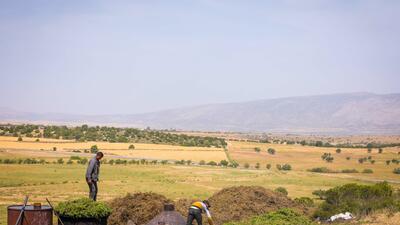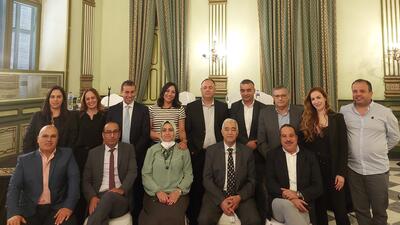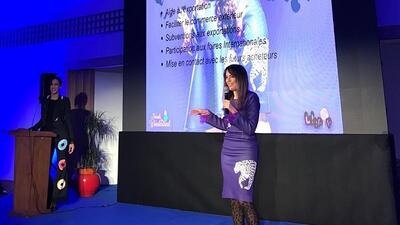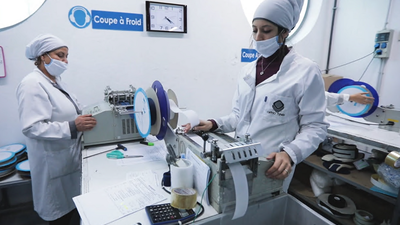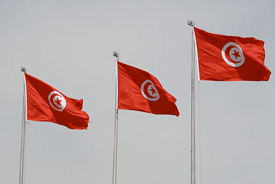
Tunisia’s textile industry needs to diversify and expand
Tunisia’s textiles and clothing industry needs to diversify its products and move beyond its main current markets and look instead at export opportunities in, eastern Europe, the Middle East, Scandinavia and sub-Saharan Africa. That was one of the main findings at a recent ITC-led roundtable discussion in Tunis during which participants discussed ITC’s proposed approach for a technical-assistance project for Tunisia’s textiles and clothing (T&C) industry.
The meeting, on 6 June, included participants from Tunisia’s Ministry of Industry, Ministry of Commerce and Handicrafts, Ministry for Regional Development, the Agency for the Promotion of Industry and Innovation (CEPEX), the Textile Technical Centre (CETTEX), Monastir Science and Technology Park, Confederation of Tunisian Citizen Enterprises (CONECT) and the Swiss Coordination Office. A first possible approach for the sector was presented and validated by participants. Participants especially emphasized the importance of a focused and practical approach, as proposed by ITC.
The approach proposed by ITC focuses on employment creation through export development. One important focus will be on enterprises established in recent years in under-developed regions outside Tunis and in the Sahel region. Enterprises in these regions, which are often dependent on a single client, need a more comprehensive approach to achieve their business goals. These include better export marketing, product and design development and material sourcing. Promotional activities need to focus more on market diversification and a shift away from the industry’s two traditional markets, France and Italy.
But the sector will also need to seek opportunities in new, more lucrative business areas. One such area is the development of apparel that use technical textiles such as work and protective wear, medical applications and the automobile sector. Several Tunisian companies have developed the know-how for such products but need to look for new markets, especially in the Middle East and Sub-Saharan Africa.
Some of the more advanced Tunisian-owned companies, as well as those with foreign participation that are directed from Tunisia, need to look into new markets such as Scandinavia, eastern Europe and the Middle East. They also need to find new ways of promoting their products, for example through the use of e-commerce tools. Equally important is the development of a positive social and environmental image for the sector. The roundtable participants and other stakeholders confirmed that hardly anything had been done so far to portray a positive image of the Tunisian T&C sector, neither in its major markets nor in Tunisia, despite the goodwill and positive democratic developments in the country.
• A first important step of the project formulation will be to avoid pre-defining the regions in which the project would work, so as not to disfavor one region over another. However, to have a strong impact, it was agreed to focus on a three to four regions. These regions should be selected at the beginning of the project based on clearly identified and verifiable indicators.
• Today, three models of enterprises exist in Tunisia, all characterized by the origin of ownership: full foreign ownership, mixed foreign and Tunisian ownership, and full Tunisian ownership. The roundtable meeting recommended that the project work only with the mixed and full Tunisian ownership models. Mixed ownership is usually characterized by that decisions are made in Tunisia by Tunisian partners — this ensures that the multiplication element is guaranteed. ITC will undertake a further analysis of the employment factor among the three types of enterprises.
• Participants pointed out that the US market is regarded as an important future market and lobbying efforts are on-going to reduce important duty rates for Tunisian clothing products. It was recommended that the US market should be investigated more deeply once Tunisia has acquired duty exemption or reduction advantages over its major competitors.
• The development of partnership arrangements (parrenage) between larger successful Tunisian companies with their own products (champions) and enterprises in the regions are regarded as important but difficult. Such arrangements will only work if they are based on business-oriented sub-contracting in which enterprises in the region are able to honor their contracts.
• Participant also expressed scepticism about the possibility of being linked with the handicraft sector as the latter cannot be “industrialized” in the same way as the T&C sector. It was agreed instead to consider a single pilot scheme in which the handicraft sector would supply accessories to a collection created by enterprises and to explore whether these could be bundled and sold together.
In addition to the roundtable meeting, ITC staff also held discussions with from other institutions on 4-7 June, including Agency for the Promotion of Industry and Innovation (API), Foreign Investment Promotion Agency (FIPA), the Fund For Access to Foreign Markets (FAMEX) and CETTEX.
API agreed to provide employment data on the T&C sector by ownership type and for Tunisia’s other export-oriented sectors in the country. FIPA provided an overview of its efforts to attract additional foreign investment into the T&C sector in Tunisia.
FAMEX will be finalized in September, but discussions between the World Bank and the Tunisian government are on-going with a view on setting up new programme. During its 10-year work Famex has supported more than 300 textiles and clothing enterprises (Tunisian-owned or with mixed ownership) in building export capacities. This work has included enterprise diagnostics, enterprise strategies, product and design development, and marketing support. Focus was on traditional markets but some pilot schemes were carried out in the Scandinavian and Russian markets. It was agreed that the ITC project under formulation will build upon the work already done by Famex, who will share all its related documentation with ITC.
There is also a need to help graduates find employment in the T&C industry. According to CETTEX, each year 600 graduates in design and fashion leave six universities, colleges and design schools without any prospect of finding employment. Working together with Tunisian enterprises to help them climb up the value chain would therefore increase employment opportunities for these graduates.






